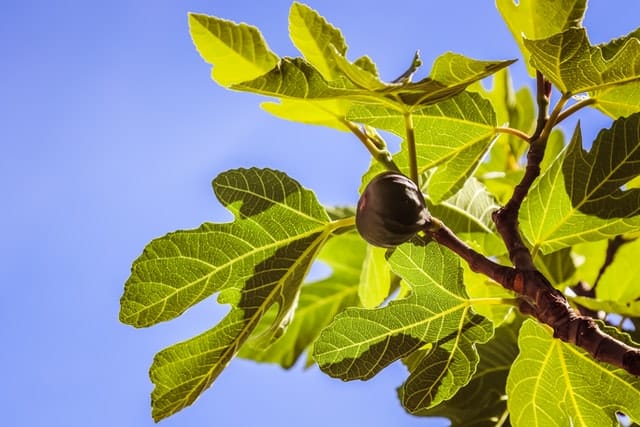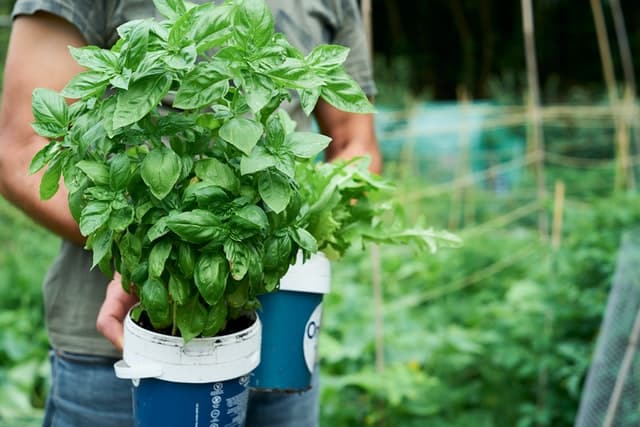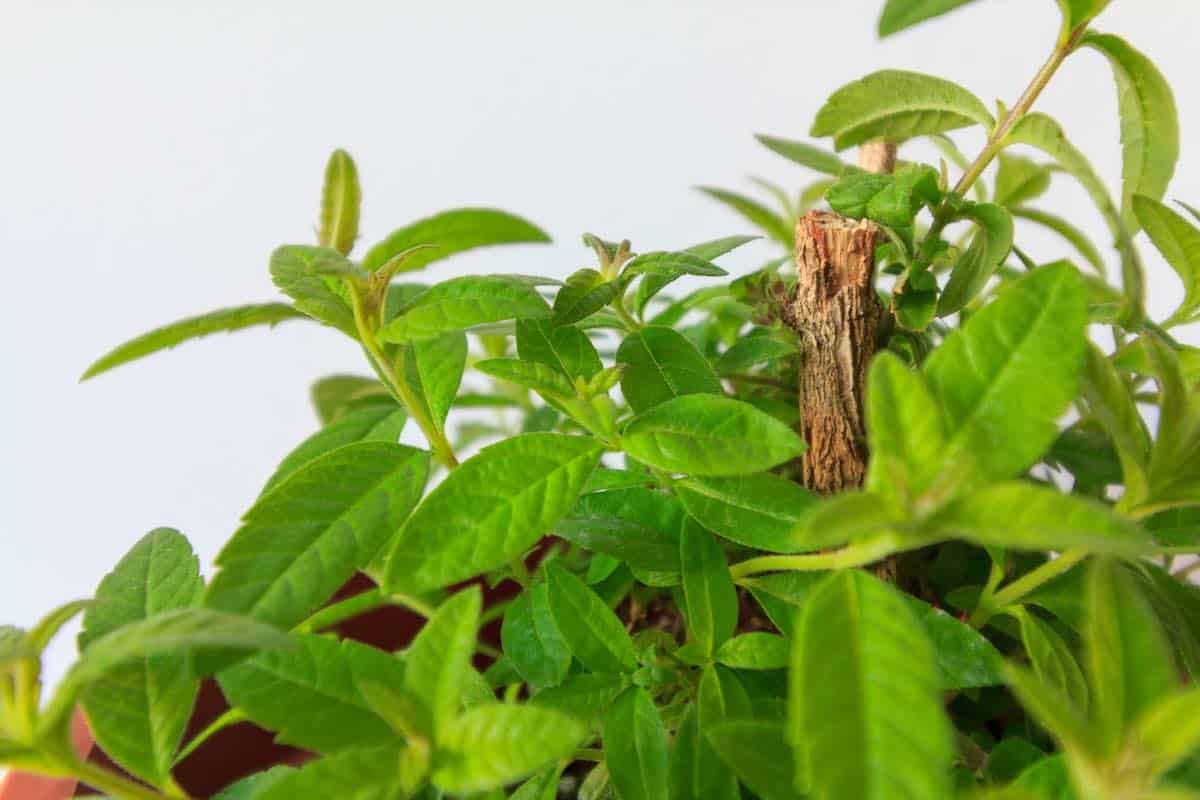The concept of plants growing from seeds is common, but what about the plants that grow from cuttings? Are you familiar with that idea? Do you know how to grow plants from cuttings?
Aside from seeding, cutting is another popular technique for propagating plants. And I bet these plant cuttings can help you propagate your garden plants faster.
Therefore, this article discusses how to grow plants from cuttings and all about their types. So, you can grow a new plant in your garden more quickly and efficiently within months.
Here’s everything you need to know about cuttings.
Plant Cuttings – Definition and Types
Plant cuttings are a piece of a plant, i.e., stem, leaves, or roots, that is cut off in 4-6 inches and buried into a growing medium to produce new roots of the same plant.
The growing medium can be anything from the soil, water, and sand. Mostly, the soil is by far the most typical media. Howbeit, water or sand can also be used.
Generally, you may grow different types of plants from these cuttings, including annuals, perennials, and woody plants. You will need a healthy plant to take the cutting from and use a sharp knife or pruning shears.
Here are some of the most common plant cuttings you may consider to propagate.
Stem Cuttings
A stem cutting is a method of vegetative (or asexual) propagation where a section of stem from the parent plant is cut and placed in a growing medium to root and form a new plant. It is an easy and inexpensive way to propagate new plants, especially woody shrubs and trees.
These cuttings can be obtained from the following resources,
Herbaceous and Softwood cuttings
Both herbaceous and softwood stem cuttings have a high success rate for rooted cuttings. However, a few crucial differences exist when assessing which cut to use.
Herbaceous stem cuttings are taken from plants with soft, fleshy stems, generally taken from early to mid-summer during the plant’s active growth period.

On the contrary, softwood cuttings are taken from young, softwood plants. They are usually taken from late spring to early summer when the new growth starts to harden.
Herbaceous and Softwood cuttings that grow easily
Carnations, Chrysanthemum, Cloues, Dogwood Cornus, Elderberry Sambucus, etc., are some common herbaceous and softwood plants that are easy to grow from stem cuttings.
Semi-Hardwood Cuttings
Semi-hardwood cuttings are taken from slightly older wood that is beginning to harden. They must be 6 to 8 inches long and harvested from the right season’s growth.
These cuttings are also suitable for a wide variety of popular houseplants. Therefore, it will be easy for you to produce young plants genetically identical to their parent.
Fact box on Semi-Hardwood cuttings
Semi-hardwood stem cuttings can be used to propagate a variety of broadleaf evergreens, including boxwood, holly, and rhododendron.
Hardwood Cuttings
Hardwood stem cuttings are taken from deciduous plants that have lost their leaves for the winter. The ideal period to harvest cuttings is during the dormant season, which lasts from late fall to early winter.

Cuttings should be 4-6 inches long and taken from healthy, non-flowering stems. If you want to see new growth, make sure to cut slightly below a leaf node.
Fact box on Hardwood cuttings
Forsythia, privet, fig, grape, and spirea are various plants propagated from hardwood plant stem cuttings.
Leaf Cuttings
Leaf-cutting is a simple process of taking a leaf from a healthy plant and inserting it into potting soil. It’s a fun and easy way to propagate new plants as well as new shoots!

So, with just a few leaves and basic supplies, you can create new plants identical to their parent. These cuttings are best suited for plants that are challenging to grow in other ways.
Leaf cuttings that grow easily
Popular herbs such as Mint, Basil, Rosemary, Avocado, etc., are easy to grow from leaf cuttings.
Root Cuttings
One of the best ways to propagate woody plants is by taking root cuttings. Root cuttings are usually taken from young, vigorous plants still in the juvenile stage. This is because compared to older, more mature plants, they are likely to grow roots faster.

The cuttings should be taken from the outermost part of the plant, as this is where the most actively growing roots are. To take a root cutting, simply cut off a section of the root about 4-6 inches long that has at least 2-3 buds attached to it.
Root cuttings that grow easily
Raspberry, blackberry, rose, trumpet vine, phlox, crabapple, fig, lilac, and sumac are a few plant examples that can be easily grown from root cuttings.
Propagation Basics
By taking cuttings from an existing plant and encouraging them to grow roots, you can create new plants that are identical to the parent plant. This is an excellent approach to increasing the number of your favorite plants without needing to buy more.
However, there are a few basics to keep in mind when propagating new plants from cuttings:
Preparing Cuttings
Choose a healthy plant to take your cutting from. This will ensure that your cutting is disease-free and has a good root system.
After choosing your plant, make a precise incision just below a leaf node with a sharp knife or pair of scissors. Then, dip the cut end of your cutting in the rooting hormone.
Planting Cuttings
Put your cutting in a planter with some moist potting soil. Remember that the potting mix should be damp but not wet. Also, don’t forget to place the mixture in a warm, bright location. This will help encourage faster root growth.
How to Make Different Types of Cuttings
A great way to get additional plants for no cost is to learn to take plant cuttings. And it isn’t as difficult as you may think. Here’s a step-by-step guide to taking cuttings from different types of plants.
How to Make Herbaceous and Softwood Stem Cuttings
To make herbaceous and softwood stem cutting, you will need a sharp knife or pair of scissors and a pot of soil. Here’s the exact process:
Time needed: 21 days
How to Make Herbaceous and Softwood Stem Cutting
- Find a plant to propagate
Find a healthy plant that you want to propagate.
- Cutting the parent plant
Cut a 2-6 inch portion of the stem, ensuring that the cutting has at least three sets of leaves.
- Rooting the cutting in a pot of soil
Incorporate some rooting hormone into the stem’s cut end. Then plant it in the pot of soil.
- Water and sun to make the cutting grow
Water the soil, and place the pot under direct sunlight to see results within a few weeks.
How to Make Semi-hardwood Cuttings
To make semi-hardwood cuttings, cut a 6-8 inch piece of stem from the plant, making sure to cut just below a node.
After that, cut off the stem’s lower half of leaves and soak the cut end in rooting hormone.
Next, insert the stem into a pot filled with moistened potting mix. Make sure the leaves are above the potting soil. Additionally, irrigate the soil frequently to keep it moist.
In 4-6 weeks, your cutting should have rooted and be ready to transplant.
How to Make Hardwood Cuttings
Hardwood cuttings should be made from robust stems formed at least a year ago. These stems should contain a couple of buds. So, when you snip it off, you get at least two buds attached to it.
Cut a 6-8 inch piece from the branch at a 45-degree angle. Then you may follow the same procedure as the semi-hardwood cuttings to develop roots within a couple of weeks.
How to Make Specialized Stem Cuttings
Specialized stem cuttings are some variations of stem cuttings, including cane cutting and lead-bud cutting. These methods are often used for difficult plants propagating via other cutting means.
Cane cuttings are generally related to plants that have thick stems. On the contrary, leaf-bud cuttings mean cutting off a single bud with a leaf from a plant.
To make these specialized stem cuttings, you’ll need a paring blade or pruning shears. After that, you can put the cutting in a container with moist soil and give it regular watering. You should see new growth peeking out from the cutting in a couple of weeks.
Recommended reading:
Best Houseplants for Cuttings
One of the easiest houseplants to propagate from cuttings is the African violet (Saintpaulia). African violets can be propagated from leaf or stem cuttings and will readily produce new plants.
Another easy-to-propagate plant is the coleus (Plectranthus scutellarioides). Coleus can be propagated from stem cuttings and will quickly produce new plants.

However, if you’re up for a challenge, you may try propagating rosemary (Rosmarinus officinalis). Compared to some other plants, rosemary requires a little more work to reproduce.
Conclusion
If you’re looking for a way to add new plants to your garden without spending a lot of money, then propagating cuttings may be the perfect solution. Almost anyone can perform it because it is a really easy operation.
Therefore, this article discusses how to grow plants from cuttings and the benefits of its different types. Whether you’re looking for a faster way to propagate your favorite plants or you want to create a whole new plant from scratch, cuttings are a great option.
So, what are you waiting for? Get out there and start propagating!
Frequently Asked Questions about Growing plants from cuttings
No doubt. Cuttings can be used to cultivate nearly any plant, and it is a quick and inexpensive way to grow new plants.
Yes, cuttings can be inserted directly into the ground, and it is not the most effective approach for ensuring that your cuttings take root and grow into healthy plants. Starting them off in a potting mix or another sterile growing medium is better. Then you may transplant them into the soil once they’ve taken root, increasing their chances of survival.
It can vary depending on the plant type, but it generally takes between one and four weeks for cuttings to develop roots. The rule is always subject to exceptions, of course. But if you’re patient and provide the right conditions, you’ll soon have baby plants of your own.
Philodendron is an easy houseplant to grow from cuttings. The Philodendron cuttings root are readily in water and resistant to various environmental factors, making them the perfect choice for novice gardeners.
Cuttings dipped in water usually root within a few weeks. However, it’s essential to keep an eye on and ensure they’re not getting too much or too little water. Over time, you can gradually increase the amount of water the cuttings are exposed to until they’re ready to be transplanted into soil.
Yes, you can grow a plant from a single cutting. All you will need is a sharp knife, a pot of soil, and water.
Many common houseplants can be propagated from cuttings, including African violets, coleus, geraniums, rosemary, and philodendrons. With just a little know-how, you can produce these new plants that are identical to their parent plants.
If you’re looking for a plant that can grow from stem cuttings, the rubber tree is the best option. The rubber tree grows quickly and can get as tall as 50 feet.

2 replies on “How to Grow Plants from Cuttings”
[…] can sell plant cuttings too. HERBS are especially profitable— especially cilantro, thyme, and […]
[…] tomato plant to produce more fruit, you will need to fertilize it with a high-nitrogen fertilizer.Pruning the plant might also help to promote increased branching and bloom output. To avoid disease, give […]